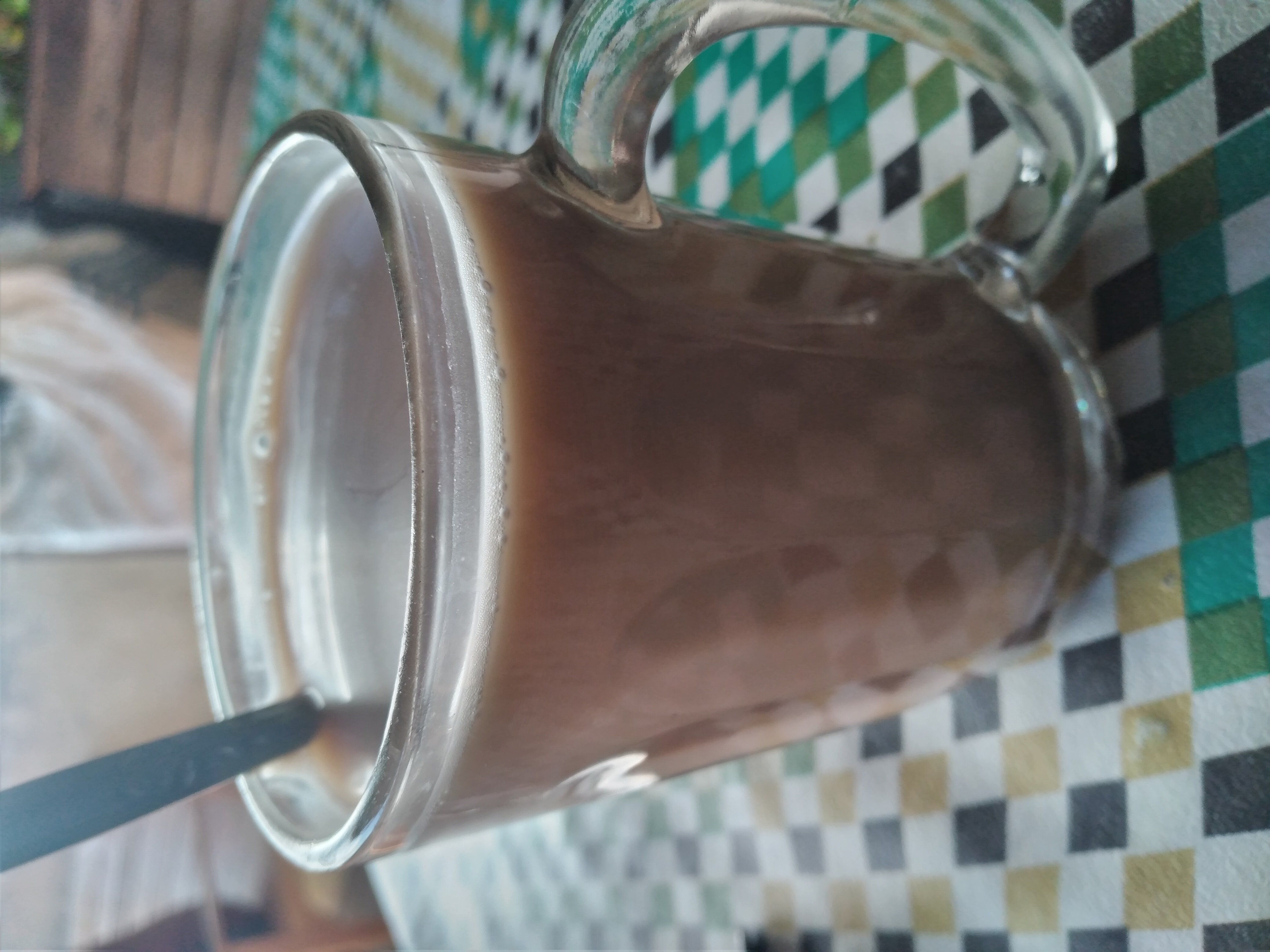
I grew up drinking an unusual drink called Milo for breakfast. I say impossible because my childhood was spent mostly in suburban Arizona and Southern California, and Milo is an Australian chocolate and malt powder made by the Swiss brand Nestle. Surprisingly, Milo is everywhere in Malaysia, where I was born and lived until I was two, and where my parents grew up.
Milo comes in a sporty, ridged green tube with an image of a boy in high white knee socks dramatically kicking a soccer ball (excuse me: soccer ). The can had a lid like a paint can, which my father opened with the handle of a spoon. He then used a spoon to put Milo powder into our cups and added hot water, followed by a splash of milk. The result is chocolate-flavored hot water that tastes a little like cereal. (Also, the powder never dissolves completely; there's always a little that you have to dodge or swallow in solid globs.) My mom's version is a little stronger—as with most things in life, she's more liberal than my dad—and her Milo is always tastes firmer (not too sweet, mostly water with a little milk). But it was always my dad who did the mixing.

As a child, I resigned myself to the fact that Milo at home would always be OK. Milo tastes best when ordered at a kopitiam , or Malaysian coffee shop, where it will be mixed luxuriously with sweetened condensed milk and you can order it in a variety of ways: iced, in a bag with a straw; hot and foamy; even as “dinosaur Milo,” a cup of iced milo with a bit of powder royally sprinkled on top. My parents pronounced Milo “Mee-lo”, so it sounded Chinese, but it wasn't. The word is properly pronounced “My-lo,” after Milo of Croton, a Greek wrestler who lived in the sixth century BC and, one might say, did not eat chocolate for breakfast. Developed in Sydney in 1934 by an industrial chemist named Thomas Mayne, the drink was intended to fortify children who were not getting enough nutrition due to the Depression. It was originally marketed as a “fortified tonic food” that could “calm the senses, induce sleep, and nourish the sick.” Another old ad claimed that “a hot, delicious cup of Milo” would “increase your resistance to winter illnesses.” Today Nestle still advertises that Milo “offers essential vitamins and minerals to meet the nutritional and energy needs of young bodies and minds.” Mr. Milo, as Mayne was called, drank his own proverbial Kool-Aid: He raised his four children on Milo, and he himself drank a cup of Milo every day until he died at age 93.
“Drink your Milo” was a common refrain in our house: Every morning, like work time, my parents insisted that I drink the Milo that my father dutifully mixed for my brother and me. I remember, they were strict. If I don't finish the rest of my breakfast, they'll be happy if I at least drink my Milo. Although it's vitamin-enriched and contains calcium, iron, and B vitamins, if you think about it, Milo isn't very nutritious: It's basically hot chocolate. But it has become their habit. My parents remember drinking Milo as kids in the 60s—the drink was already well-known in Malaysia due to its marketing efforts. Around the 1950s, Milo trucks—a la Red Bull cars—were parked at sporting events and handed out free cups of Milo to kids playing sports. Milo in Malaysia is as common as Coke: you can order it at KFC and McDonald's as easily as you can order it at a coffee shop or roadside food cart.

The far-flung towns I grew up in were places like Tempe, Arizona, and Indio, California, but no way, nothing could take me back to childhood like a cup of Milo—the spoon clinking in the cup, the chocolate steam rising steaming. Our family ate Church's chicken and shopped at grocery stores that catered to white people; at school I was often the only Chinese child. Even though we adapted as best we could with what we had, my parents' commitment to Milo remained steadfast. They buy our Milo on trips to Malaysia every four or five years. They smuggled canned Milo, along with my mother's homemade curry paste and dried fish, into our suitcases back to the United States. Sometimes Horlicks malted milk will replace Milo if we're really in a pinch (and this substitution is always loudly complained about).
Now I wonder if—at least subconsciously—Milo was our parents' way of holding on to the past. Over the years, as my parents got better jobs, our family moved closer to Los Angeles, where ethnic grocery stores sold Milo. But my parents refused to buy it in American stores — they insisted it wasn't the same formulation. They had to wait years until their next trip to Malaysia to buy Milo. Then they would pack the cans into our trunk for loving transport home.









